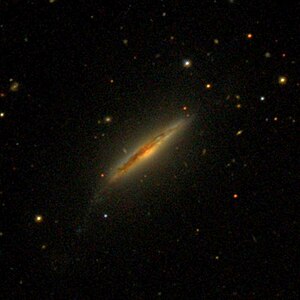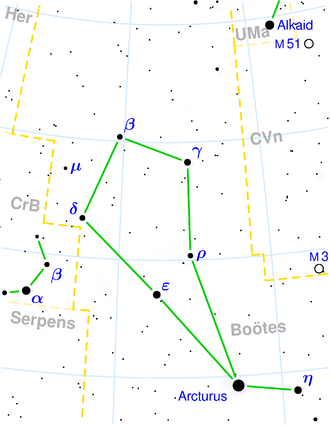NGC 5900
| Galaxy NGC 5900 |
|
|---|---|

|
|
| SDSS recording | |
| AladinLite | |
| Constellation | Bear keeper |
|
Position equinox : J2000.0 , epoch : J2000.0 |
|
| Right ascension | 15 h 15 m 05.1 s |
| declination | + 42 ° 12 ′ 34 ″ |
| Appearance | |
| Morphological type | Sb: sp / HII |
| Brightness (visual) | 14.1 mag |
| Brightness (B-band) | 14.9 mag |
| Angular expansion | 1.7 ′ × 0.5 ′ |
| Position angle | 131 ° |
| Surface brightness | 13.8 mag / arcmin² |
| Physical data | |
| Redshift | 0.008376 ± 0.000027 |
| Radial velocity | (2511 ± 8) km / s |
|
Stroke distance v rad / H 0 |
(118 ± 8) · 10 6 ly (36.1 ± 2.5) Mpc |
| history | |
| discovery | Wilhelm Herschel |
| Discovery date | April 9, 1787 |
| Catalog names | |
| NGC 5900 • UGC 9790 • PGC 54431 • CGCG 221-044 • MCG + 07-31-46 • IRAS 15132 + 4223 • GC 4078 • H III 660 • h 1915 • | |
NGC 5900 is a 14.1 likes bright spiral galaxy of Hubble type Sc in the constellation Bootes and about 118 million light-years from the Milky Way center.
It was discovered on April 9, 1787 by Wilhelm Herschel with an 18.7-inch reflector telescope, who described it as "eF, cS".
